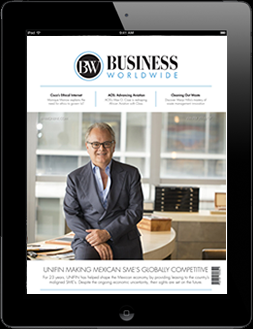Stricter tax rules are making it more difficult to be tax-efficient while investing your money. However, by keeping aware of all your tax-efficient options, and investing smartly across a diverse portfolio, there may be significant tax reliefs that you can utilise.
Mixing debt and equity can help for smaller investment portfolios; £1,500 of interest (or £500 or higher-rate taxpayers) can be earned in a year before any tax is due, while dividends have a £2,000 p.a. tax-free allowance.
Furthermore, dividends carry a lower tax rate after these allowances than interest/employment/self-employment incomes, as well as better tax rates than capital gains taxes for those on the basic-rate tax band.
This is, however, again subject to a tax-free allowance; you can currently make disposals of up to £11,700 tax-free in your investment portfolio. This currently includes gains made on selling cryptocurrency, provided that this is neither a regular nor primary source of your income.
If you buy shares in SEIS/EIS-qualifying companies, you may be able to gain income tax relief on 50%/30% of the amount invested respectively, plus a capital gains exemption on disposal of these shares if held for five years. You can even take advantage of loss relief if the investment goes bad; the loss can be claimed as a capital loss or against income tax in the current or previous year.
In addition, bonds currently allow you a tax deferral on withdrawals up to 5% of their original investment (plus any top-ups paid in that year) as well as any unused 5% allowances from previous years. Bonds are segmented, allowing you to withdraw from each segment it’s divided into, or encash whole segments. Finally, ‘top-slicing relief’ offers potential tax reliefs on the taxable gain where the withdrawal would take you into the additional rate. Flexible use of all of these can allow you to manage your withdrawals to minimise your tax bill on them.
To make best use of all of these reliefs, you are best-placed speaking to a qualified financial advisor, who will be able to assess your current tax situation and therefore advise you on how to make the most of these allowances across your portfolio.
They can also advise you on timing, such as how to best spread realising your investments over several tax years so as to make the most of all your allowances available.
Tax-efficient wrappers
You can also improve tax-efficiency by considering where you hold your investments. For instance, those held through pension schemes offer tax-free returns. In addition, any money moved into a pension scheme – subject to annual and lifetime allowances for pension deposits – brings an income tax relief that can negate any tax due made on the gains of investments not held in pension schemes.
ISAs also offer tax-free returns and do not attract a tax charge when you withdraw from them. Investing through a stocks and shares ISA, for example, can therefore allow you to make investment gains tax-free. If you are looking to invest to save for the future, a Lifetime ISA may offer far better returns for this too.
Finally, investing through Venture Capital Trusts and Authorised Investment Funds (such as Authorised Unit Trusts and Open-Ended-Investment-Companies) offer tax-free disposals on investments; the former on disposal of your personal interest and the latter on gains held through them. Personal taxes are still due on the gains from the Authorised Investment Funds, but investors can receive investment income in the form of dividends on their shares in the funds. As a result, it may be more tax-efficient to receive this income through the company, rather than as a personal investor.
Venture Capital Trusts also qualify for several income tax reliefs. If you hold the shares for five years, you should be able to claim income tax relief on up to 30% of the amount invested. In addition, dividends from shares held in them are tax-free (as long as you are invested within the permitted maximum of £200,000), and there are no capital gains taxes due on the disposal of your interest in these trusts.
Therefore, you can gain further tax efficiencies on a diversified portfolio by careful management of where these investments are held. You should again discuss this with a financial advisor to find the most appropriate solution for you.
Taking care
As with all types of investment, each of the above methods involves risks as well as benefits. Companies that qualify for EIS and SEIS shares are inherently riskier as they are newer companies with less of a track record to assess performance from.
Balancing your portfolio to make the best use of allowances might not mean that you realise the most gains, while pension schemes incur extra tax charges if you deposit into them or withdraw more than your limits.
Finally, there have been a lot of reports in the news about tax schemes designed to offer tax reliefs – such as investing in film companies, who can apply for tax credits based on their expenditure in Britain – but areas of tax efficiency are narrow, and the old adage that if it looks too good to be true, it probably is, was never more relevant. HMRC will always disallow tax reliefs where they were not part of investments made for genuine commercial reasons, and if they were made primarily to avoid tax.
If you are in any doubt, speak to a financial or tax advisor, who will be able to review areas of tax efficiency planning and their relevance to you.
Hasib Howlader is the director of Howlader & Co, as well as a chartered accountant, chartered tax adviser and licensed insolvency practitioner.
















